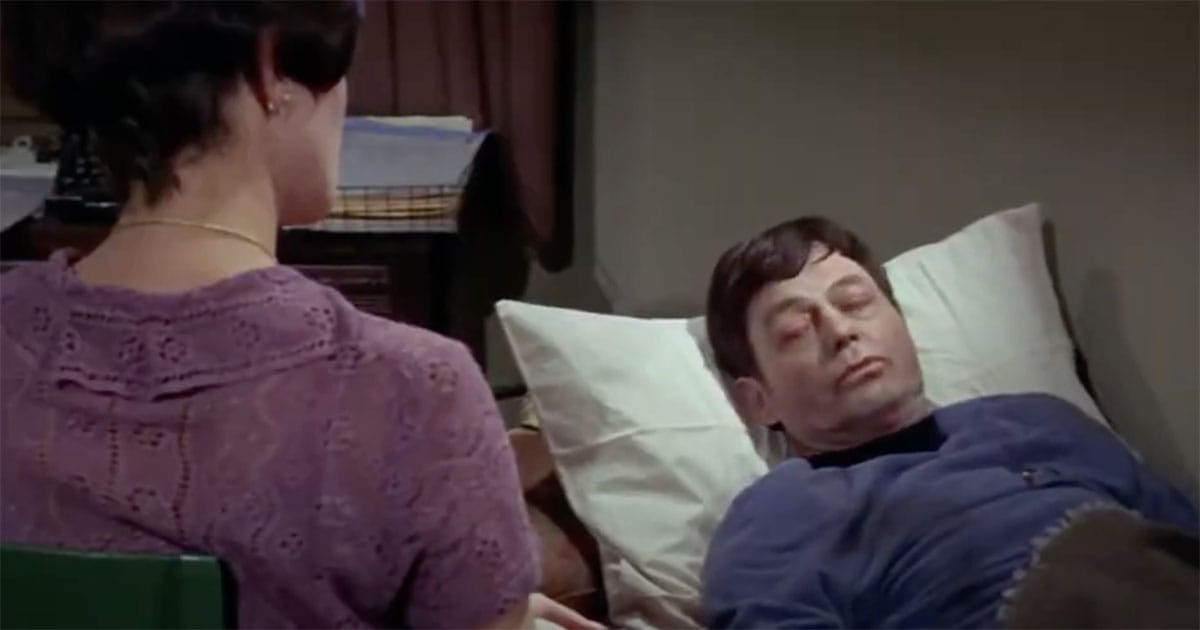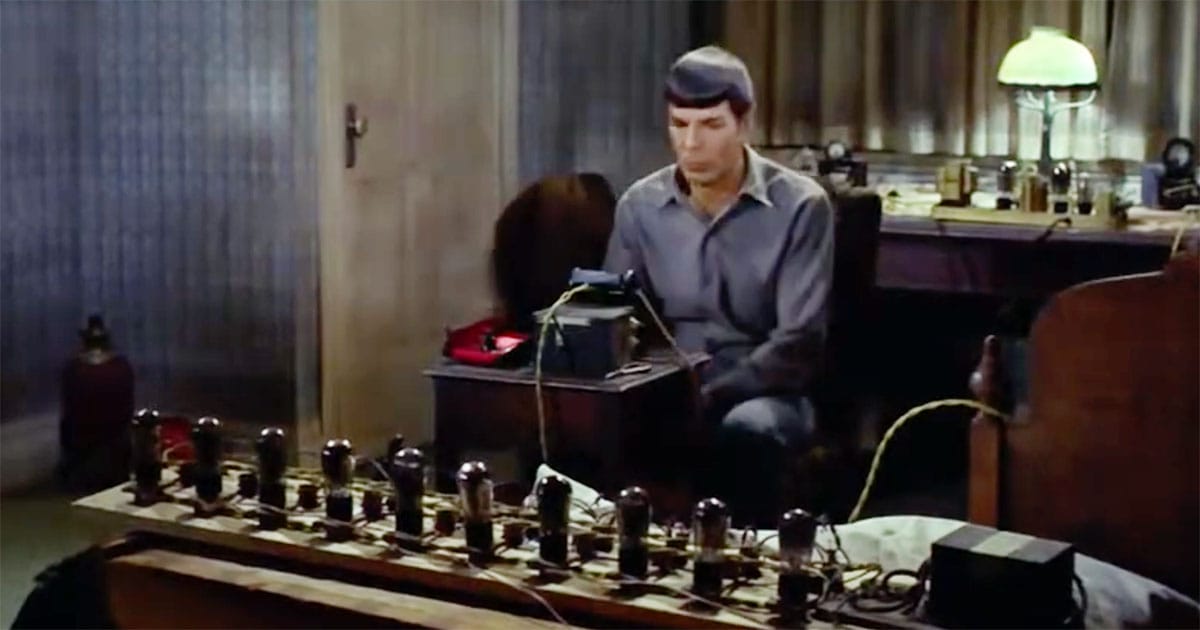Love and Loss in "The City on the Edge of Forever"
A poignant look at "The City on the Edge of Forever," the "Star Trek" episode where love, duty, and sacrifice collide in one of science fiction television's most unforgettable tragedies.

First broadcast in April 1967, "The City on the Edge of Forever" is widely regarded as the crown jewel of the original "Star Trek" series. Its script, originally penned by noted science fiction writer Harlan Ellison and later revised for television, delivers a story of uncommon emotional depth within the framework of televised science fiction.
At first glance, the episode appears to follow a classic romantic arc—Captain Kirk, displaced in time, meets a compassionate woman in Depression-era New York and falls in love. The setting is quaint, the dialogue tender, and for a moment, the viewer might believe that this detour through history offers the promise of hope and happiness.
But what unfolds is not a simple tale of love across time. It is, instead, a meditation on duty, sacrifice, and the weight of moral responsibility. Beneath the gentle trappings of a love story lies a science fiction tragedy—one where saving the woman would mean dooming the world. It is this very tension that elevates the episode, transforming it from melodrama into timeless narrative.

A Fractured Timeline and a Leap to the Past
The story begins not with romance, but with chaos. A medical accident aboard the Enterprise sends Dr. Leonard McCoy into a delirium, and in his confusion, he beams down to an unexplored planet. There, the landing party discovers the Guardian of Forever—a sentient, time-traveling gateway that displays images from Earth's past. Before the crew can intervene, McCoy hurls himself through the portal and vanishes into history. Almost instantly, the timeline unravels. The Enterprise vanishes. The future ceases to exist.
Faced with this catastrophic change, Kirk and Spock realize they must follow McCoy into the past to prevent whatever damage he has caused. The Guardian deposits them in New York City in the year 1930, amid breadlines, flophouses, and the uncertainty of the Great Depression. As they attempt to locate McCoy and correct the timeline, they encounter Edith Keeler, a social worker whose vision of peace and progress draws admiration.
Spock's makeshift tricorder, cobbled together from vacuum tubes and scavenged electronics, reveals a grim truth. In the unaltered timeline, Keeler dies in a traffic accident. If she lives, her pacifist influence delays America's entry into World War II, allowing Nazi Germany to triumph. To preserve the future, history must be allowed to proceed on its original and tragic path.

The Woman Who Must Die
Edith Keeler stands apart from the dusty streets and weary faces of Depression-era New York. She is neither cynical nor broken. She offers food, dignity, and hope to the destitute who seek shelter in her mission. More than that, she speaks of a future where humanity reaches for the stars, embraces peace, and turns its back on war. Her ideals, remarkably aligned with the Federation's own, seem almost prophetic.
It is this vision that draws Captain Kirk to her. At first, their connection is practical. Keeler offers Kirk and Spock work while they await the right moment to intercept McCoy. But as the days pass, Kirk finds himself captivated—not by circumstance, but by character. Keeler is intelligent, earnest, and unshakably kind. For the first time in a long while, Kirk imagines a life beyond duty. A quieter life. A life with her.

Meanwhile, Spock continues his quiet investigation. Using recovered data from the Guardian, he confirms what history demands. Edith Keeler must die. Her survival creates an alternate future where the United States delays entry into World War II. That delay shifts the balance of power toward the Axis. The conclusion is undeniable. The woman who inspires Kirk's love is also the hinge upon which civilization itself turns—and must fall.
The Choice That Breaks the Captain
When McCoy finally appears in 1930, dazed but recovering from his accidental overdose, he finds himself welcomed by Edith Keeler. Unaware of the timeline's stakes, he is charmed by her warmth and grace, much as Kirk has been. The reunion of the three men should be a moment of triumph. Instead, it becomes the setting for a devastating choice.
While walking together one evening, Edith moves ahead and steps into the street as a delivery truck barrels toward her. McCoy, seeing the danger, instinctively moves to save her. But Kirk intervenes. He seizes McCoy and holds him back. He does not explain. He does not justify. He simply does what must be done. Edith Keeler dies in the street.
The horror on McCoy's face says it all. He cannot understand how his captain could allow such a thing. Kirk, broken and silent, offers no defense. Spock, standing nearby, says only that he understands. The silence that follows is heavier than any words. The mission is complete. History is restored. But something inside Kirk is gone.
This is not a victory. It is a burden. Kirk loved Edith Keeler—not in passing, but deeply. He glimpsed in her a better life, one untouched by war or command. But as a captain, he bore the responsibility of the future. And that meant surrendering the one thing he wished to keep. In that moment, Kirk embodies the tragic cost of leadership—the willingness to choose what is right, even when it destroys what is precious.

A Story of Love, Loss, and the Weight of Command
"The City on the Edge of Forever" remains one of the most lauded episodes in the history of televised science fiction. While Harlan Ellison's original script offered a bleaker narrative with a more cynical view of Starfleet, the final version—shaped by Gene Roddenberry and the production team behind the series—delivered something far more enduring. It became a story grounded in deep emotion, historical texture, and moral consequence.
This episode continues to resonate because it refuses to offer simple answers. There is no miracle solution, no escape from the consequences. Kirk makes the only decision he can, and he must carry it with him. In doing so, he becomes a more complex and human figure. The story honors the principle that duty often requires personal sacrifice, even when that sacrifice leaves a permanent scar.
For those who cherish classic science fiction, this episode exemplifies the genre's finest qualities. It merges imaginative speculation with timeless ethical questions. It challenges the viewer's heart and mind. And it leaves us with a haunting reminder of what leadership demands—the courage to protect the future, even when it breaks the present.

